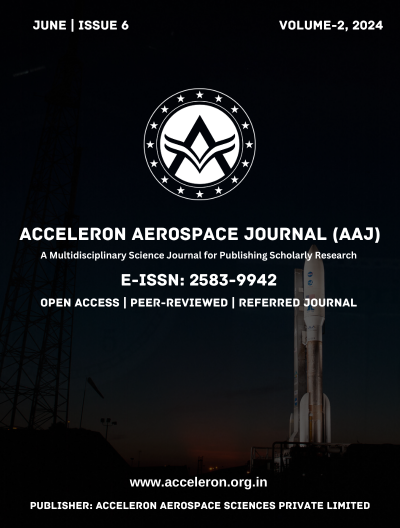Analytical Solution to the Steady Navier-Stokes Equation for a Supersonic Cone in the Area of Boundary Layer Behind the Shock Wave by Means Tunnel Mathematics
DOI:
https://doi.org/10.61359/11.2106-2429Keywords:
Navier-Stokes Equation, Spatial Complex, Supersonic Flow, Tunnel Mathematics, Shock Wave, Compressible FlowAbstract
The means of tunnel mathematics (the theory of functions of a spatial complex variable) allow for an analytical solution to the problem of supersonic flow around a cone in the area of the boundary layer and beyond. The peculiar feature of the Navier-Stokes equations is that they allow for the determination of analytical velocity fields of fluids only for a small number of simple problems. Of course, the problem of the supersonic motion of fluid around a cone is not included in this number. Tunnel mathematics is a method for finding analytical vector velocity fields for steady flows of fluids with axial symmetry. The Navier-Stokes equations are then used to determine pressure and temperature distributions. The main theorem of tunnel mathematics allows for the determination of these distributions for planes z = const (similar to constructing slices of a brain in an MRI procedure). By collecting these “slices,” we can obtain full space distributions of pressure and temperature around a supersonic cone. At this stage of investigation, the conclusions obtained through tunnel mathematics make it possible to qualitatively assess the thickness of the boundary layer on the cone's surface, the shape of the shock wave, and whether the shock wave intersects the boundary layer. First of all, we focused on ensuring that the resulting solutions corresponded to the physical pattern of phenomena. No doubt, solutions obtained through tunnel mathematics must be confirmed experimentally.
Downloads
Downloads
Published
How to Cite
Issue
Section
Categories
License
Copyright (c) 2024 Acceleron Aerospace Journal

This work is licensed under a Creative Commons Attribution 4.0 International License.
The Acceleron Aerospace Journal, with ISSN 2583-9942, uses the CC BY 4.0 International License. You're free to share and adapt its content, as long as you provide proper attribution to the original work.





